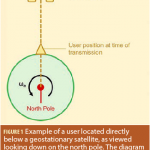Brussels View: Lessons to Be Learned From Galileo Signal Outage
July 2019 was a difficult month for the Galileo program. A system-wide technical failure that took a week to resolve was compounded by a communications breakdown that dismayed its supporters. For the European Commission, the road back will be difficult, but it is a road worth traveling.













